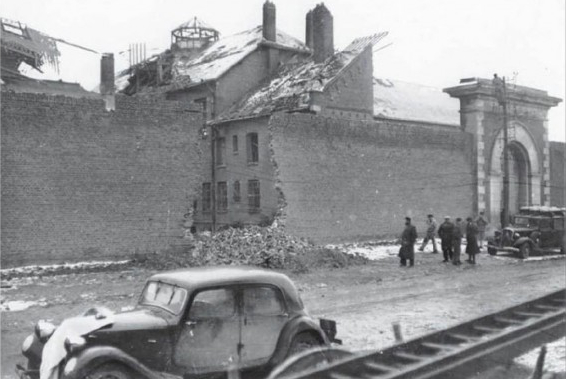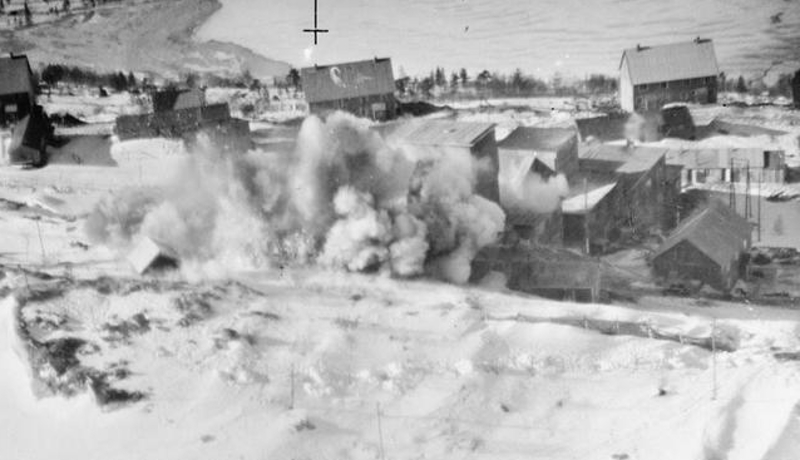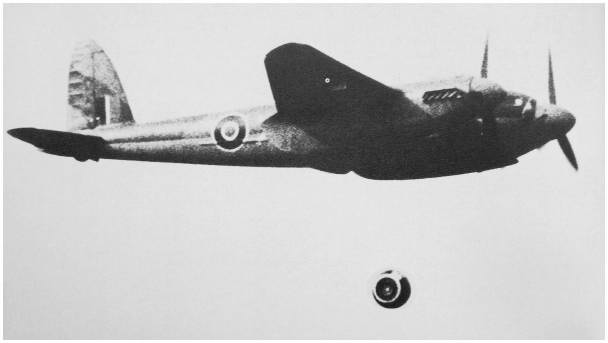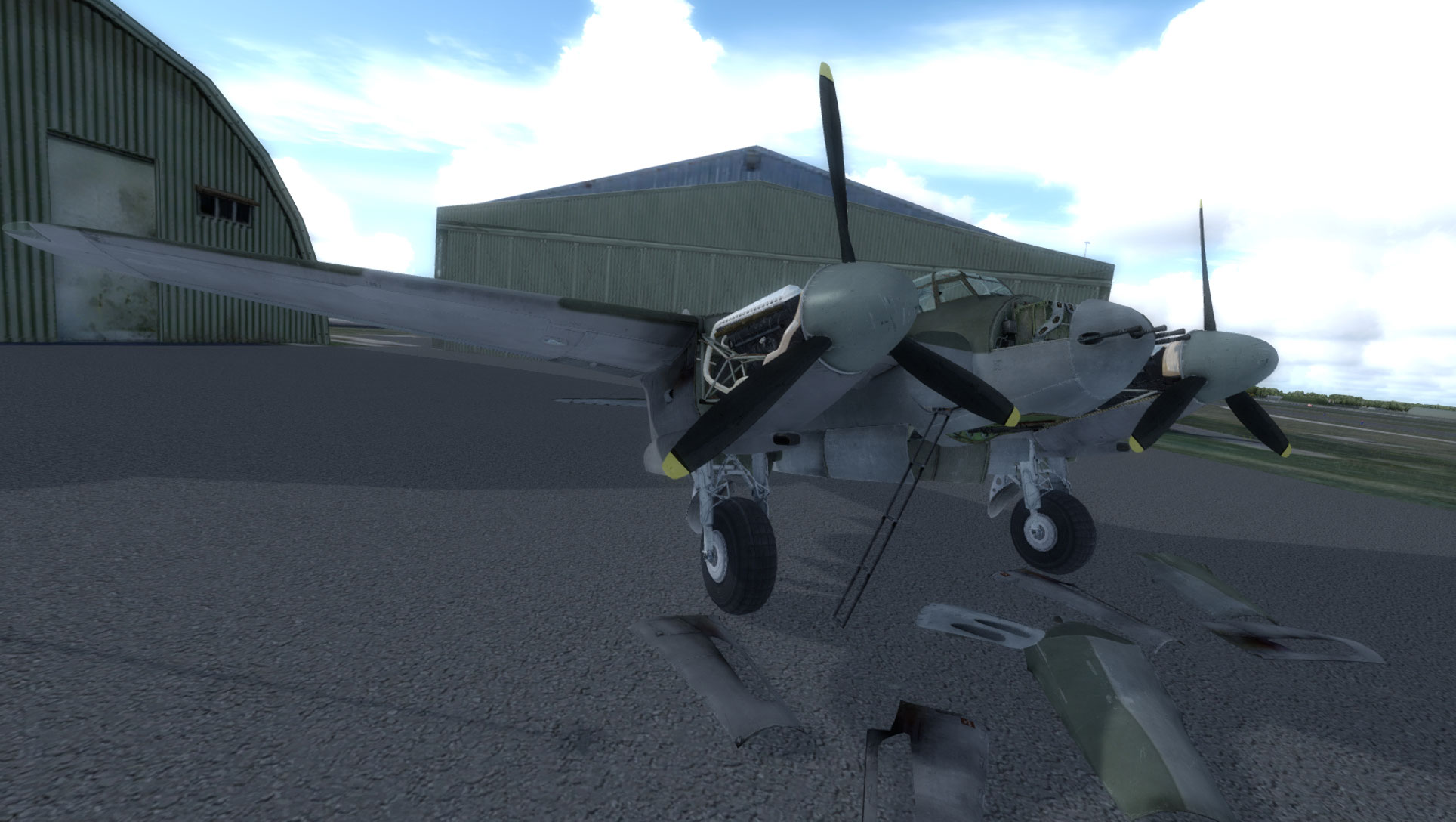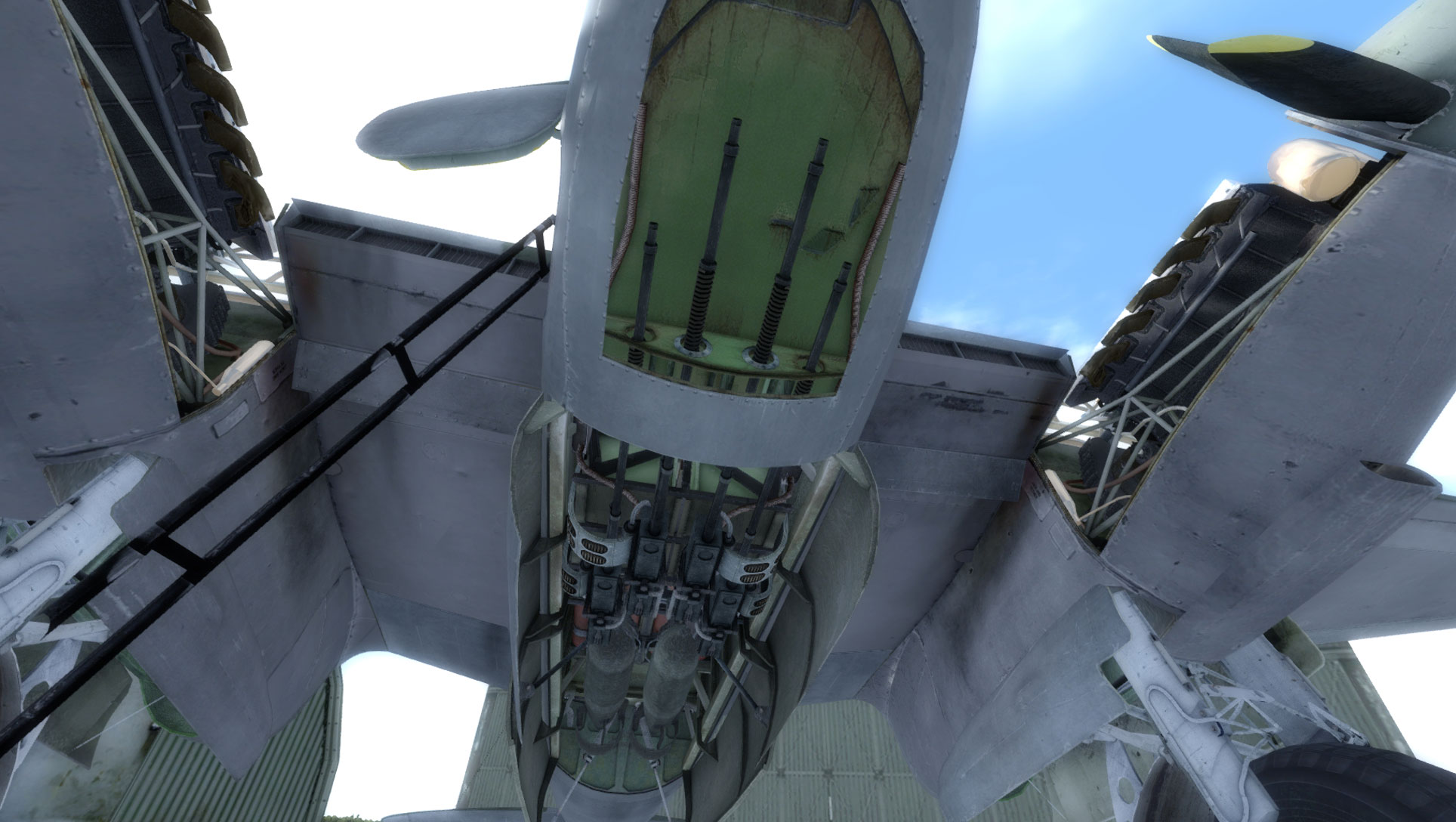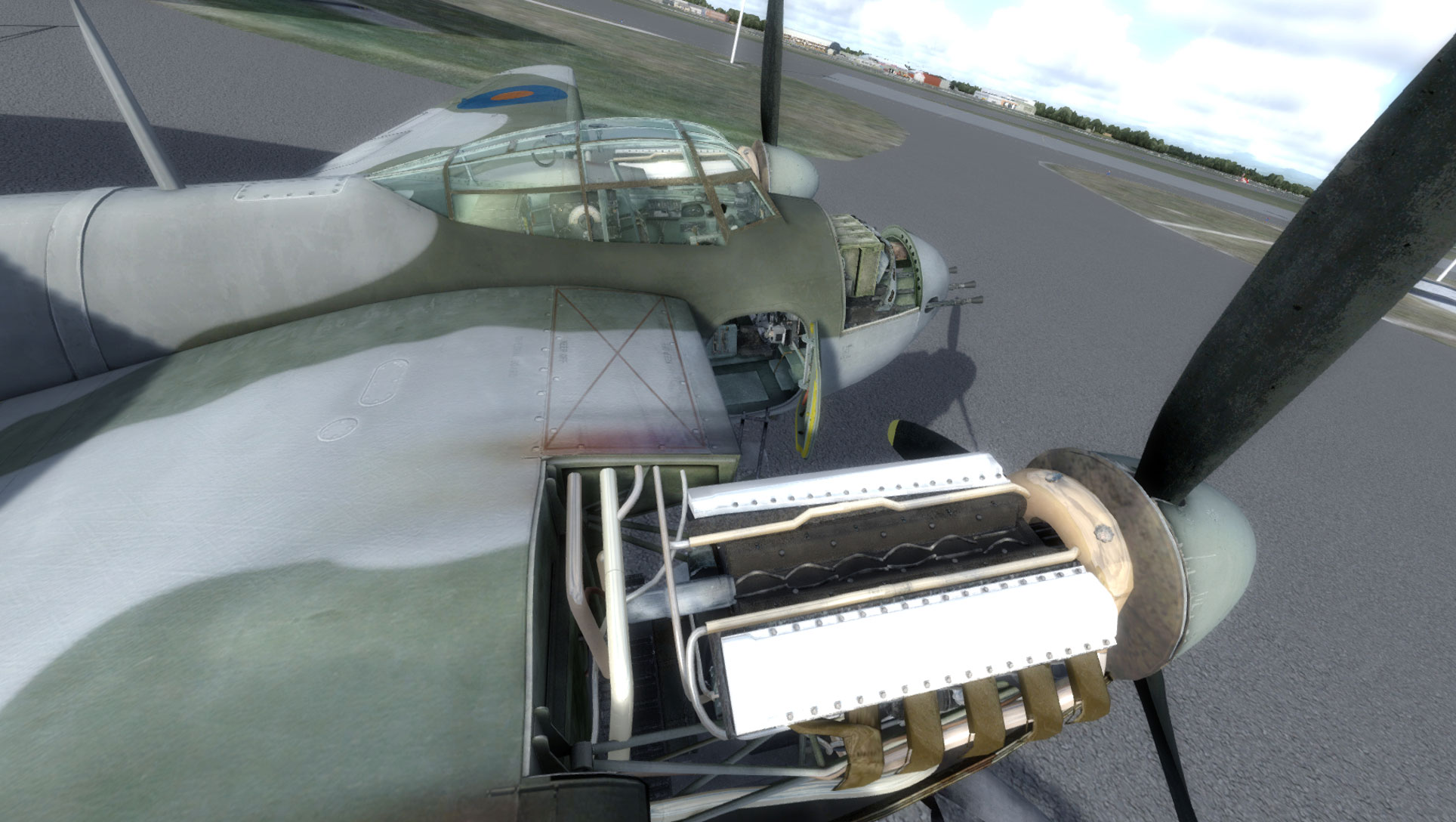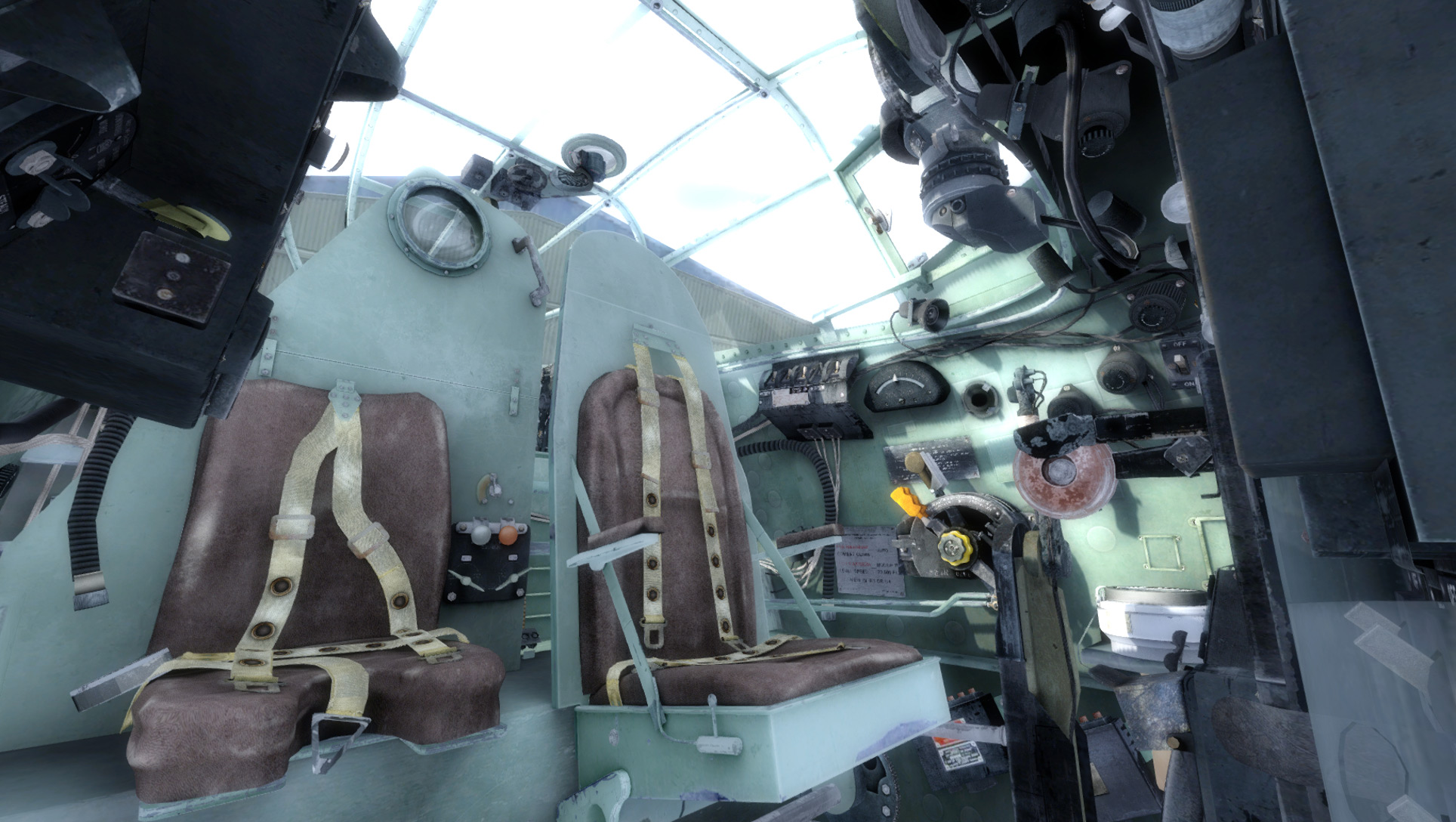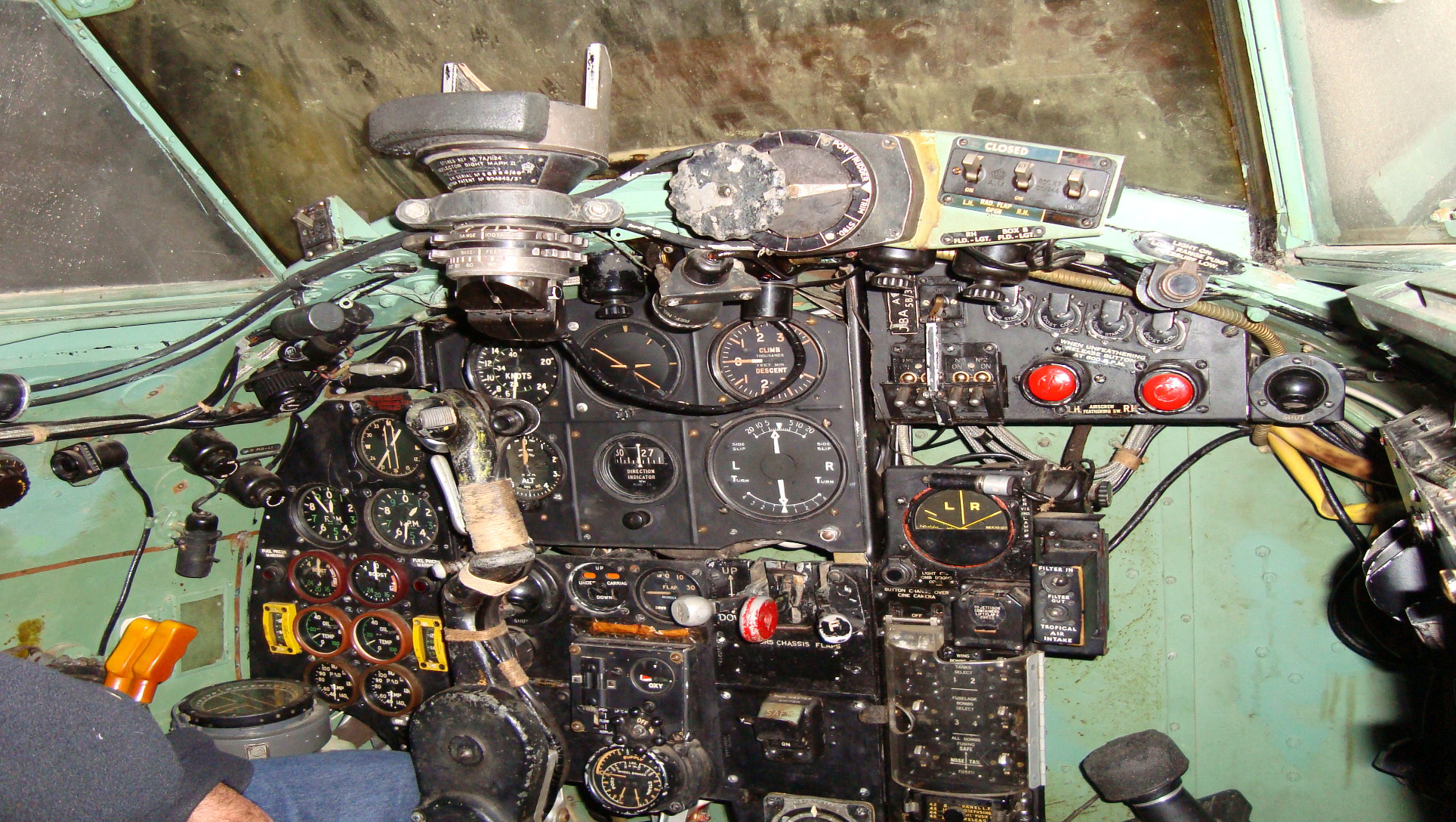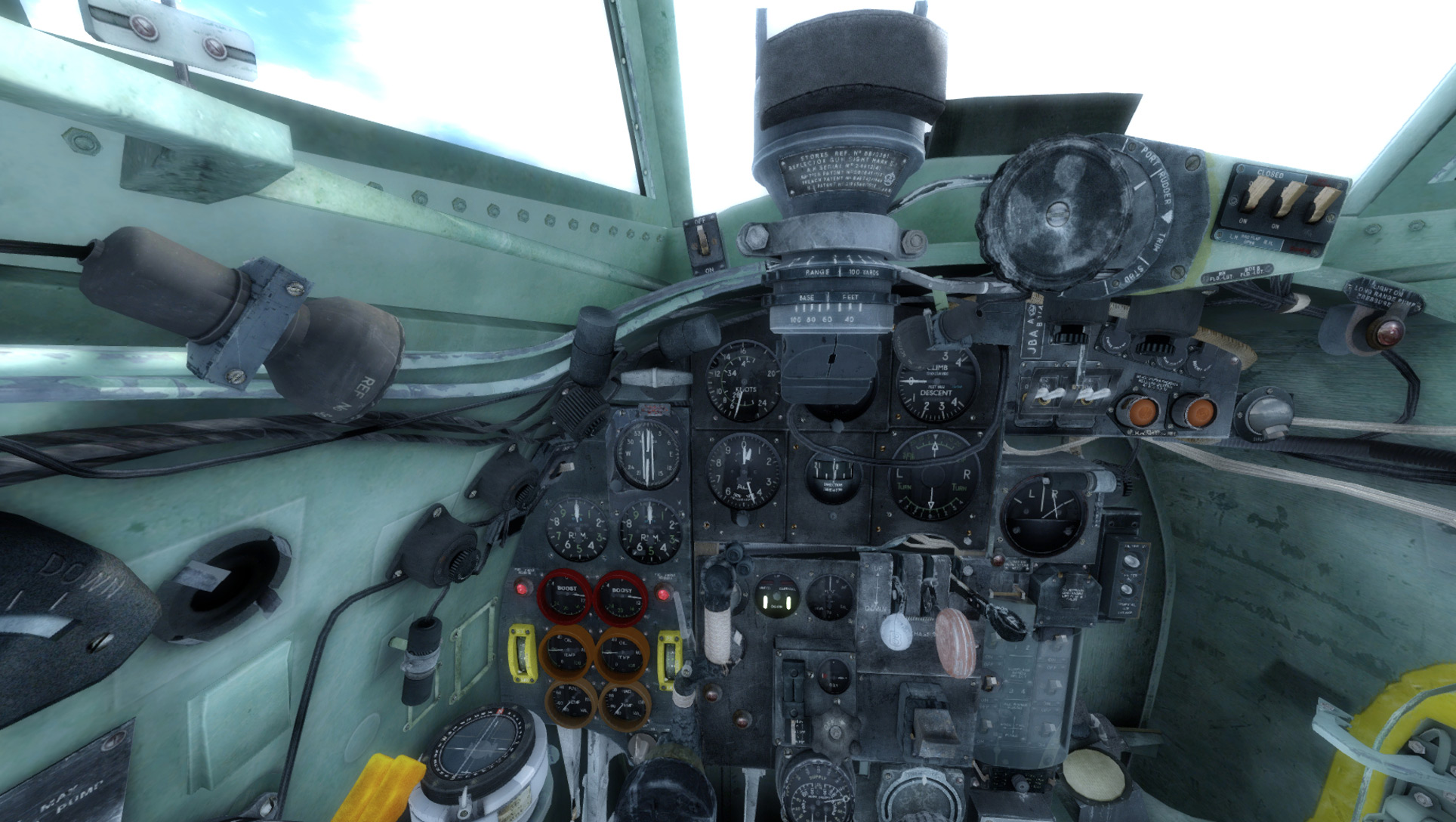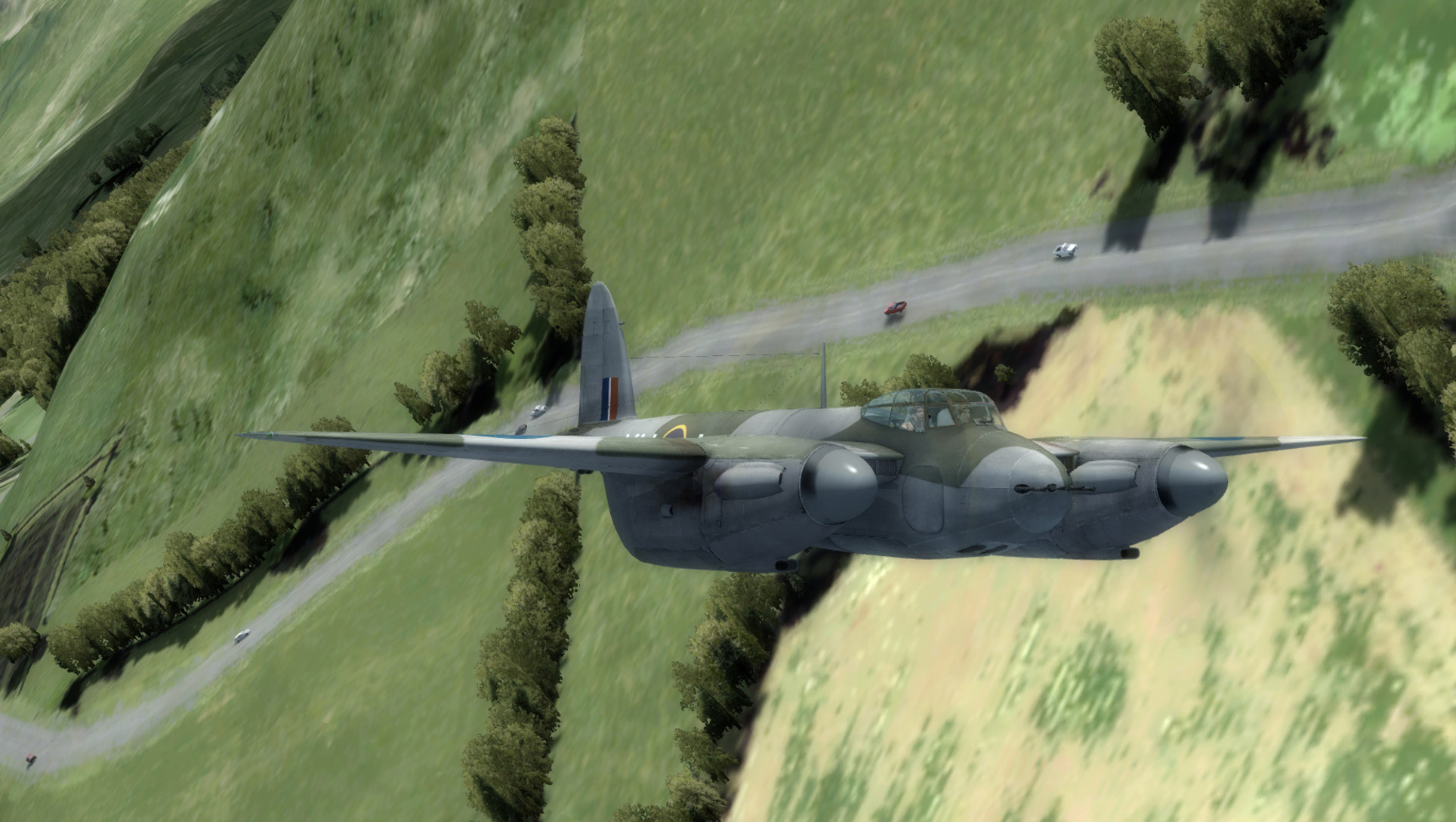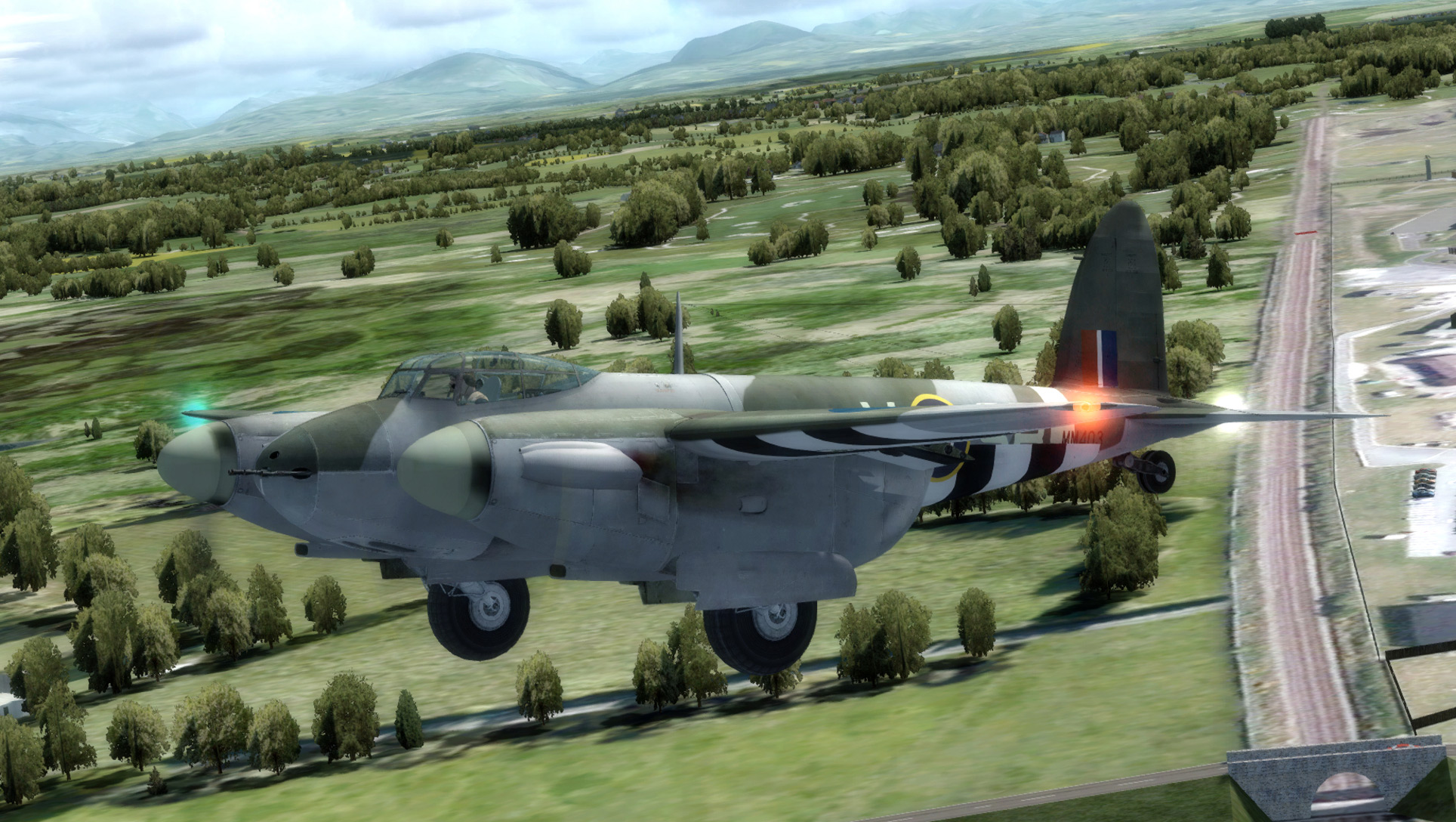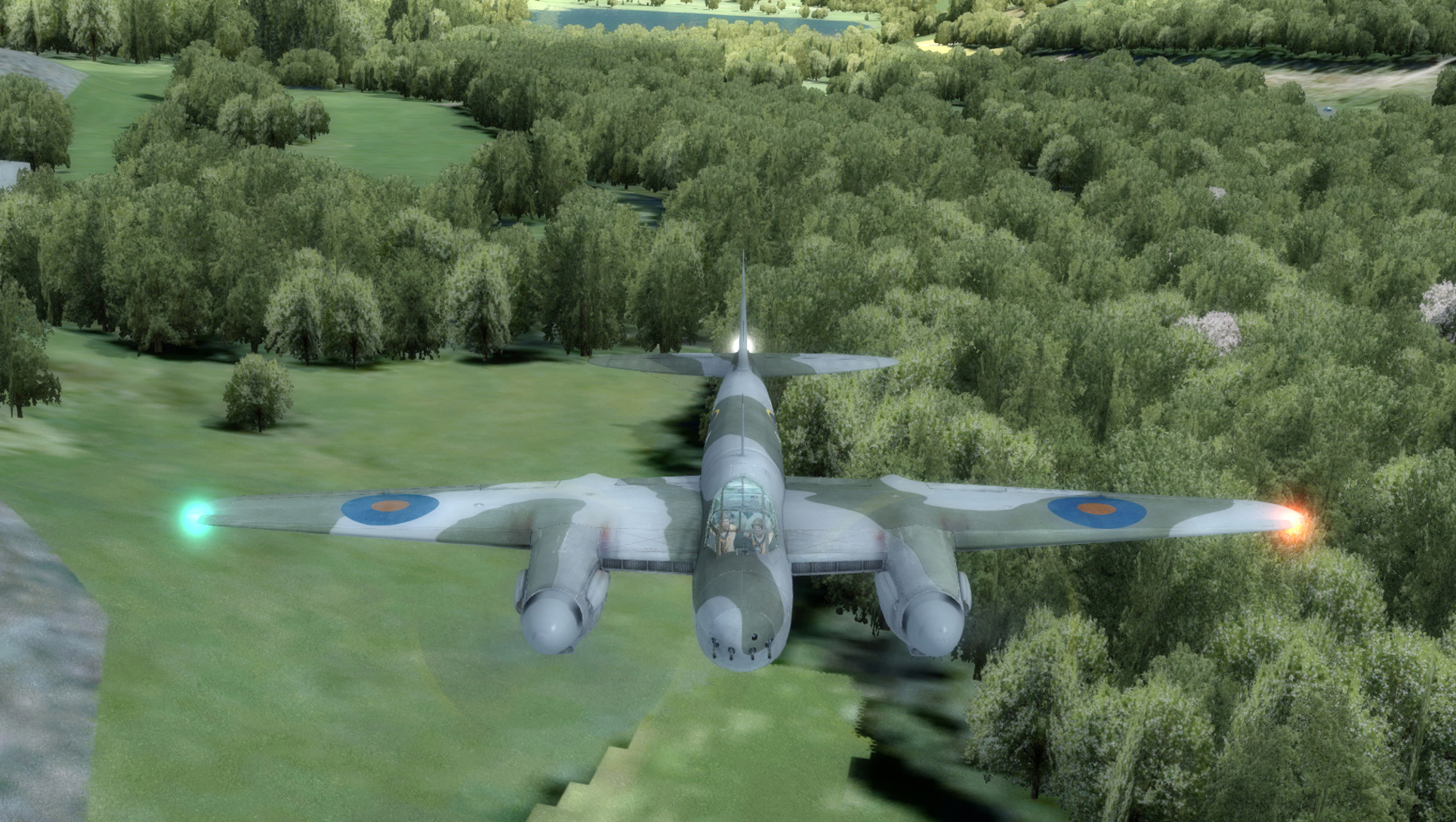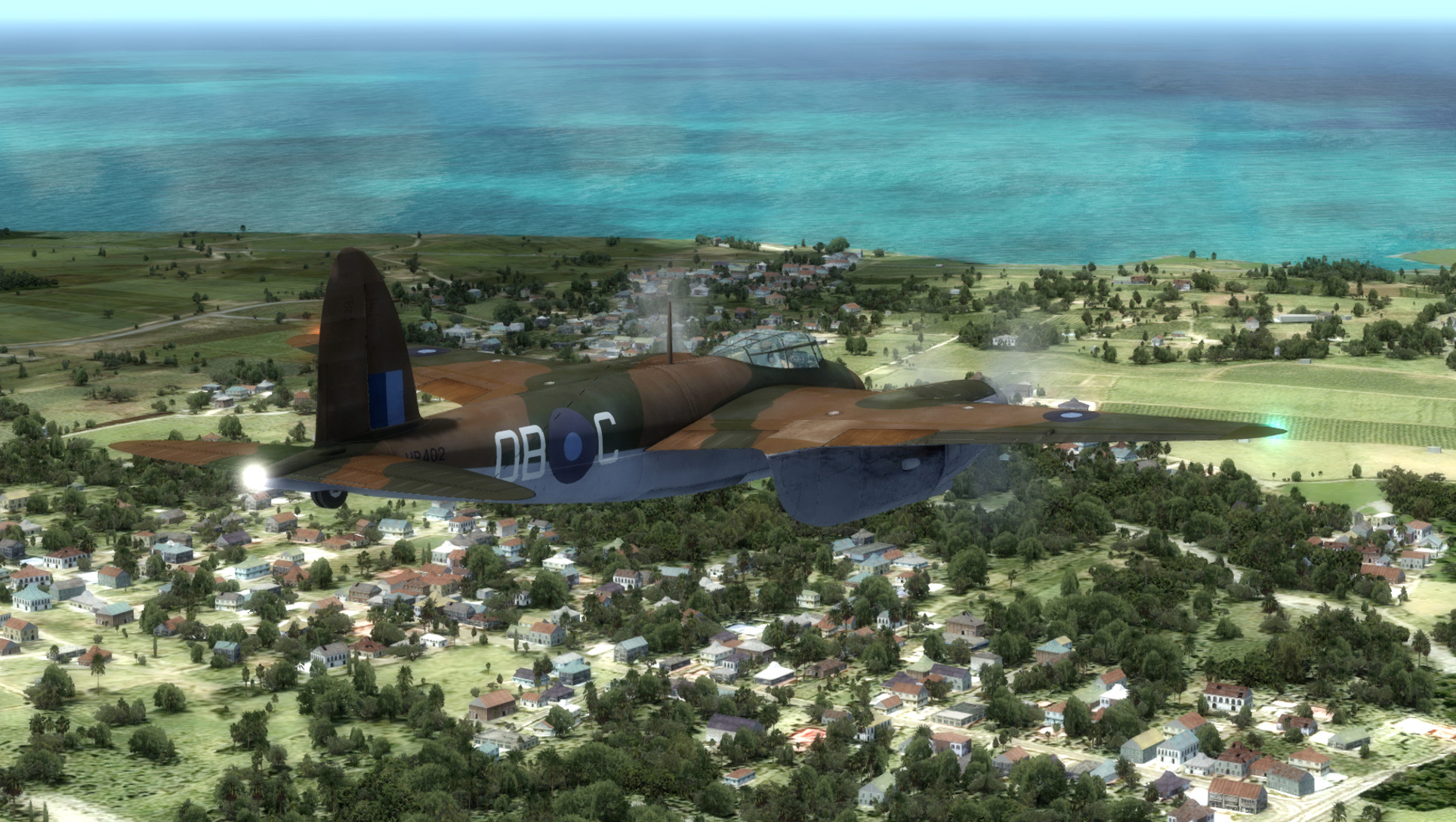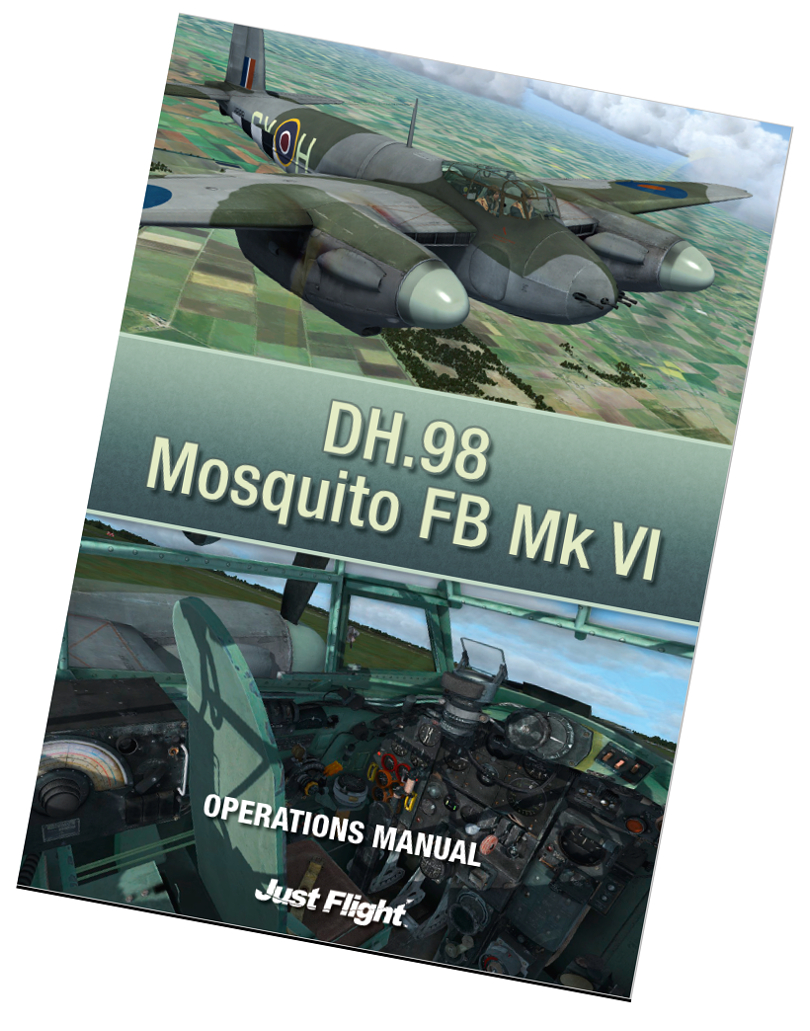Introduction
The de Havilland DH.98 'Mosquito', or 'Mossie' as it was known to the crews who flew them, was a truly remarkable aircraft, probably unique amongst its World War II peers and counterparts. This aircraft was to ensure the success of many daring raids on German positions, some of which seemed impossible before the 'Mossie' took them on.
This review will look at Just Flight's latest offering, the DH.98 'Mosquito' FB Mk. VI.
Background
The de Havilland aircraft company felt it should be doing something to help with Britain's contribution to World War II and so, unsolicited, approached the War Office with a design for a light, fast twin engine bomber of wooden construction. In March 1940, the first contract was awarded to produce 50 DH.98 bombers based on de Havilland's specification. de Havilland were told in no uncertain terms that the production of the 'Tiger Moth' and the 'Oxford' aircraft were to take priority in production, but because the 'Mosquito' was made of 'non-strategic' plywood for its construction, production went ahead without compromising raw materials for current projects. The aircraft may well have withered on the vine if this had not been the case, and so the furniture, cabinet makers, and other woodworkers of Britain set to on their war work and on what was to become an iconic aircraft.
Construction of the prototype pushed ahead through the difficult months of the summer of 1940 with Hitler's campaign in full swing to destroy the RAF and demoralise the citizens of Britain prior to an invasion. When the bomber prototype was ready to fly on 25th November 1940, faith in the light bomber concept was flagging and the aircraft was re-invented as a long range fighter, and orders dropped to just 20 from the initial 50 airframes. However, the Germans had heard about this new fighter/bomber being developed and parachuted an agent close to Salisbury Hall in London Colney to spy on the development - he lasted a day before being captured. The maiden flight of the 'Mosquito' fighter took place on the 15th May 1941 and the 'Wooden Wonder' was born.
Operational History
The first operational flight of the 'Mosquito' was on 20th September 1941 with a long range reconnaissance flight over France. The type was being introduced as a replacement for the aging Bristol Blenheim and by late 1942 the aircraft was becoming operational in ever increasing numbers. The 'Mosquito' was to see service as a bomber, a fighter bomber, a fighter, a night fighter, a torpedo bomber, a target tug, a maritime reconnaissance aircraft, and a photo reconnaissance aircraft. It was truly a multi role aircraft and excelled in all of these roles. One thing made the 'Mosquito' stand out from the other aircraft in RAF service, it was fast, very fast. In fact, from 1942 to 1943, it was the fastest operational aircraft in the skies anywhere in the world. As home defence in its night fighter role it destroyed approximately 600 enemy aircraft in three years and a further 600 V1 Flying Bombs in just a two month period.
Operation Jericho
The 'Mosquitos' speed and its ability to operate in all conditions as a fighter and bomber bought it to the attention of those whose task it was to crack the most difficult Nazi 'nuts'. It was in this role as the vehicle for some of the most daring attacks on German positions that the 'Mosquito' is remembered. One such raid took place on the night of 18th February 1944 against the German Gestapo Headquarters in Amiens, France when 18 aircraft of No. 140 Wing of the RAF Tactical Force based at RAF Hunsdon in Hertfordshire took off for a low level attack on the Gestapo Headquarters. Their task, to destroy the German troop sections of the prison complex and to breach the perimeter wall to aid the subsequent escape of the prison's imprisoned resistance workers. This called for bombing at a very low level and with a precision not ever accomplished before. As far as the raid went, the objectives were completely met, with 255 prisoners escaping, albeit some for only a short time.
Other Notable Involvement
On 3rd March 1944, nine 'Mosquitos' of No. 139 Squadron attacked a mine in Norway which produced molybdenum, a mineral which is a vital ingredient in the production of armour plate. The mine was a very small target but the attacking 'Mosquitos' successfully destroyed the mine with the loss of only one aircraft. The 'Mosquito' was the pioneering aircraft for precision bombing that our armed forces use today. Barns Wallis, designer the famous Upkeep Bomb, otherwise known as the bouncing bomb that was used on the famous Dambusters raid, had also designed a smaller bomb of similar operation called Highball. This bomb was designed to skip over the surface in the same way as the Dambusters weapon but to hit the side of a ship and thus destroy it. The 'Mosquito' was to be the delivery platform, launching the bomb at 60 ft above the sea and at a speed of 360 mph. However, the weapon, whose initial purpose was to attack the Tirpitz, never saw service. The 'Mosquito' attack on a Norwegian heavy water plant by No. 633 Squadron is a work of fiction, but had such a mission been required, then I would like to think that the 'Mosquito' would have been the best aircraft for the job.
Other Service
The 'Mosquito' saw service with 21 different countries. Reading through this list of countries is interesting. The aircraft flew with the air forces of Israel, China (both the People's Republic of China and the Republic of China), the Soviet Union, and the USA. Its appeal clearly crossed political and ideological boundaries, such was its worth.
In all, over 7,600 'Mosquitos' were built, of which about 30 survive as non-flying museum pieces and a further two as flying aircraft.
Availability and Installation
The Just Flight DH.98' Mosquito' FB Mk. VI is currently available direct from Just Flight and Just Flight resellers as a download only product (some resellers also offer a master back-up CD / DVD service for a minor additional cost). It is priced at £24.99, or the equivalent on currency cross rates. The download file size is 159MB and it requires 600MB of HDD space for installation.
Installation is straight forward and an easy to follow on screen process guides you through the installation process to identify your flavour of flight sim and eventually asking you to verify your Just Flight account details before completing the install.
Models
There are six 'Mosquitos' included in this package.
Visual Appearance
External Model. Just Flight's 'Mosquito' has been built using the most accurate plans available, including original factory plans and drawings. The model is highly detailed with intricate separately modelled panels and rivets, etc. Bump and specular mapping is used to produce a truly 3D feel to the aircrafts texture. All the control surfaces are animated as are the retracting undercarriage and the pilots opening windows. The detail on the aircraft's more complex parts, such as the undercarriage, is superb, with some amazing detail included. The aircraft has removable exhaust covers, nose gun panels, bomb bay doors, belly gun panels and doors, and engine covers which reveal highly detailed Merlin engines. Apart from the usual features that are expected of an aircraft add-on, there are plenty of additional features which come with this product. There is a control panel which is accessible from the instrument menu which allows you to adjust the view point of the aircraft, remove the Pilot and/or the Copilot, and to remove the engine covers. The crew hatch is opened and closed using the simulators exit 1 key sequence, exit 2 opening and closing the bomb doors, exit 3 the gun panels, and exit 4 the canon panels. Removal of some panels will expose textured surfaces which actually look like distressed plywood with dirt and grime running in the grain of the ply as can be seen above the cannons in the screenshot. If the air filter switch is switched on from the cockpit, the exhaust covers can be removed and the radiator shutters are operated from a switch in the cockpit. The detail displayed across the external model is exceptionally fine and you really get the sense that this is a good solid aircraft from the detailed construction and the excellent rendering, not only in the correct colours, but the right degree of weathering and the correct lustre of the different types of material.
Internal Model. The cockpit is highly detailed with much of the switches, levers, and buttons animated and working. From the screenshots and photo below, it is easy to see that the add-on's cockpit is true to its real life counterpart. General wear and tear is well represented and gives the cockpit a very true to life feel. The colours are spot on, as are the creation and positioning of all instrumentation. The internal cockpit parts of the aircraft that are visible from the outside are also represented well. Convincing crew members sit in their place with sufficient detail around them to present a very creditable presentation of the aircraft's crew positions.
Sounds. The sounds in this package are very convincing, from the various clicks of switches to the various engine notes throughout the throttles range. My only criticism might be the engine sound transitions which can be a bit unpolished at times and some of the more detailed noises are missing, such as the hiss of the brakes as they are applied.
General Characteristics and Performance Specifications
The 'Mosquito' was famed for many things, a night fighter and a low level bomber probably being the more memorable of them.
Taxiing this aircraft is not easy. The engines are very powerful and minimal throttle movement is needed to conduct a safe ground speed. Being a tail dragger and having its main undercarriage housed in the engine nacelles makes for the nose being very high when on the ground. This makes taxiing problematic as forward vision is minimal, and it is necessary to weave from side to side to see where the aircraft is going.
Take-off in this aircraft is reasonably quick with the tail lifting early and the wheels leaving the ground after a longer period. Once airborne, speed must be gained on the level before climbing but the acceleration of this aircraft is very good so it is not long before a fast climb is possible. During a take-off run whilst still on the ground on all three wheels, I accidently applied too much rudder which caused the aircraft to turn to an angle of about 30 degrees to the runway. The result was a turn, as would be expected, but also a forward skid, not to dissimilar to, say, a rally car on a sharp turn. This didn't feel right especially as it made correcting the turn so much the harder.
The service ceiling of the 'Mosquito' Mk. VI was 37,000 ft and its maximum speed was 378 mph or 328.5 kts. I managed to climb this aircraft to 42,000 ft with no signs of a stall and only minor instability, I could have nursed it higher still, perhaps a further 2 to 3 thousand feet, and this didn't feel right. Speeds at low level were fast, but at altitude, I was getting an overspeed at 230 KIAS. This is correct, as per the book, as were the landing speeds and all other speeds.
The 'Mosquito' is a bit tricky to land, being very light on the controls, but I understand that this is true to form for the 'Mosquito' and not surprising if you think about it. It is a plywood aircraft, glued and screwed together, with two massively powerful Merlin engines mounted in it.
Overall, I found the aircraft flight envelope to be good, the only issue I had was with the service ceiling which was a tad too high in my opinion.
General Characteristics
| Crew | Two |
| Passenger Capacity | Not Applicable |
| Length | 40 ft 11 in |
| Wingspan | 54 ft 2 in |
| Height | 15 ft 3 in |
| Empty Weight | 14,300 lb |
| Fuel Capacity | 361 US gal |
| Maximum Take-Off Weight (MTOW) | 25,000 lb |
| Power Plant | 2 x Rolls-Royce Merlin, liquid cooled, V12 |
Performance Specifications
| Maximum Speed | 378 mph |
| Range | 1,855 mi, ferry range |
| Service Ceiling | 37,000 ft |
| Rate of Climb | 2,850 ft/min |
Flight Characteristics and Dynamics
Having flown this 'Mosquito' for a while, I have come to love it for what it was - a fast, low level fighter bomber. You can cruise at 25,000 ft if you want, but a small passenger twin can do that without so much noise. The fun begins when the aircraft enters its own territory, take it down to the deck to fly under the German radar and suddenly you understand that this is no carthorse, this is a thoroughbred, and there isn't another warbird of its age that will catch it. What's more it is a delight to fly.
Documentation
The 'Mosquito' comes with a 46 page manual. This manual details the aircraft specifications, installation instructions, and a section on how to get support. All of the instrument panels are explained, including those parts which, although in operative in the simulation, have a purpose in real world. There are sections on flares, munitions, the aircrafts lights, and a large section on how to fly the aircraft. The documentation also includes all of the aircraft's checklists and the key speeds of the aircraft's flight envelope. It is good to see such a comprehensive document set, which is augmented by the aircraft's kneeboard that has the checklists, reference information and a key guide. Full marks to Just Flight here.
Value for Money
Priced at £24.99 this offering is excellent value for money. It is priced lower than some top end military add-ons which are available, nonetheless it matches many of them in quality and complexity.
Simulator Performance
The aircraft model performed excellently within the existing settings I have and there was no discernible performance or frame rate cost at all with good simulator performance in all tested situations.
Technical Requirements
This version of the Just Flight DH.98 'Mosquito' FB Mk. VI is for FSX / FSX SE / P3D v2.5 or v3.0 only. Other specified technical requirements are as follows:Windows 10 / 8 / 7, Vista, XP (32 or 64bit);
Microsoft Flight Simulator FSX with SP1 and SP2 installed (or Acceleration Pack) or Lockheed Martin Prepar3d Flight Simulator (v2.5 or v3.0); and
Pentium V, 3.0GHz or similar, 2GB RAM, 512MB graphics card, and 600MB available HDD space.
Review Computer Specifications
The specifications of the computer on which the review was conducted are as follows:Intel i7 6700K 'Skylake' 4.0GHz;
NVidia GTX970, 4GB;
16GB, DDR4, 2133MHz;
Windows 7, (64bit); and
Lockheed Martin Prepar3d Flight Simulator (v3.2).
Conclusion
The Just Flight DH.98 'Mosquito' FB Mk. VI is a beautiful aircraft which is fun to fly. Being a high performance military aircraft, it can be tricky and sometimes difficult to handle in certain situations. Nonetheless, this is an aircraft add-on which will provide hours of enjoyable flying.
Verdict and Scores
Verdict
| A great value addition to your flight simulation set up. Fun to fly, tricky in parts, an add-on you will come back to time and time again. |
Scores
For |
Against |
Category |
Score |
|---|---|---|---|
| Accurate and well detailed | Some flight performance aspects outside specification range | Internal Model | 10 |
| Superbly rendered | Difficult ground handling | External Model | 10 |
| Good flight characteristics | Some sound details missing | Flight Characteristics (does it fly by the numbers) | 9.0 |
| Good engine sounds | . | Flight Dynamics (does it feel like what it looks like) | 8.5 |
| Comprehensive manual | . | Sounds | 9.0 |
| Excellent value for money | . | Documentation | 10 |
| . | . | Value for Money | 10 |
Overall Score

The Just Flight DH.98 'Mosquito' FB Mk. VI is awarded an overall Mutley's Hangar score of 9.5/10, with an "Outstanding"
|



